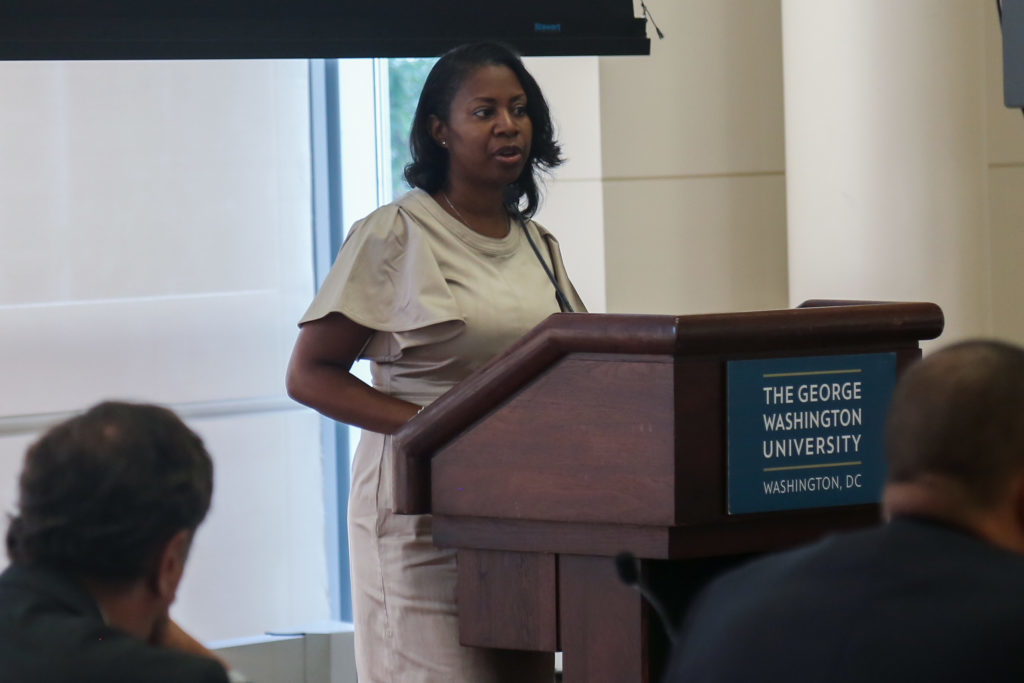Updated: Nov. 3, 2016 at 3:50 p.m.
The Alumni Association is cracking down on inactive members of its board of directors.
The organization plans to cut its board by more than 15 members by 2019 and launch a task force with the University’s alumni office in an effort to make its leadership more active by dropping board members who don’t contribute to the group. Members of the association said the changes would make decision-making processes more efficient.
Venessa Marie Perry, the president of the Alumni Association, said she plans to cut the board from 47 members down to 30 members within two years. As board members’ three-year terms expire their seats will not be filled and if there are issues with attendance, giving or engagement issues, board members will not be renewed for a second term.
“We recognize in order for us to be much more efficient and agile, we have to shrink our board,” she said in an address to the Board of Trustees last month.
The Alumni Association’s bylaws allow for no more than 60 at-large members on its board, which manages the association and makes decisions about its programming. The board includes faculty, students and administrative representatives as well as one representative from each school at the University, selected by the dean’s or director’s office.
The nomination process for at-large members will open on a rolling basis in late 2018, she said.
“We realize some people have more time than others, but some people were just not attending, not being involved.”
But Perry said she plans to change the makeup of the board, allowing board members – not school leaders – to select school representatives to the board.
“We can’t have a third of our board being selected by other people and that is really critical for us,” she said at the Board meeting.
Jeremy Gosbee, the former alumni association president, also prioritized having a more active board for the association by creating more formalized peer outreach. In 2015, the board had 72 members and the board was split into seven committees.
Perry announced at a Board of Trustees meeting last month that the association has partnered with the Office of Alumni Relations to form a task force to focus on a new structure for alignment between the association and GW’s alumni office.
Specifically, Perry said the group of directors wants to have greater access to the affinity groups like the GW Black Alumni Association and the Green Alumni Network that previously had not been very connected to the Alumni Association.
“The GWAA Board of Directors would like to have a closer relationship with these volunteers to create a more consistent volunteer and alumni engagement experience,” she said.
The task force will consist of representatives from the executive board and the Office of Alumni Relations meeting every two weeks.
At the beginning of the fall semester, Perry said she wanted to connect current students with alumni to introduce students to the alumni network while they are enrolled at GW in hopes that they will become more engaged later on.
Marty Baum, the chair of the finance and operations committee and treasurer on the Alumni Association’s executive board, said the changes will help unify the mission of the Alumni Association instead of having several members from various schools thrown together on the same board.
“What we’re trying to say is there’s more power and there’s more influence if we pull it all together and kind of row at the same time, as opposed to everyone pulling in their own directions,” he said.
He said opening up the board to alumni chosen by the association would help diversify board members and find members who can be more dedicated to the association’s mission. This will be a change from alumni who only participate because they were selected by the dean or director of a school.
“We realize some people have more time than others, but some people were just not attending, not being involved,” Baum said.
“The alumni have a conduit to the university for their own viewpoints and ideas.”
Participation is a problem at all types of volunteer organizations, he said, but there is more accountability now for board members to make sure they are putting in their share of commitment. Baum added that if a board member doesn’t participate their term won’t be renewed. Board members are required to attend at least one meeting a year and donate annually to the University to keep their positions.
Baum said the point of the task force is to decide whether funding for the Alumni Association should be tied with the Office of Alumni Relations and examine ways the association and the office can work more closely together. Currently, the University and the Alumni Association are two different entities and the association operates independently from the University.
The Board of Trustees is also examining ways to make alumni more involved in campus with a new task force started over the summer.
Andrew Shaindlin, the vice president at Switchboard, an online alumni community tool for universities, said typically alumni associations have boards that are 20 to 30 people, which is enough to be representative of different populations of alumni but not so big that individual alumni can’t contribute.
When alumni associations and universities are more closely aligned, he said both entities can benefit.
“The Association can draw on staff time, funding, and data insights that the university has available,” he said in an email. “The alumni have a conduit to the university for their own viewpoints and ideas.”
This post was updated to reflect the following correction:
The Hatchet incorrectly reported that the nomination process for school representatives to the Alumni Association will begin in late 2018. The nomination process for at-large members will begin at that time. We regret this error. This post was also updated to reflect that the move to cut the number of board members is still in the planning phase.





